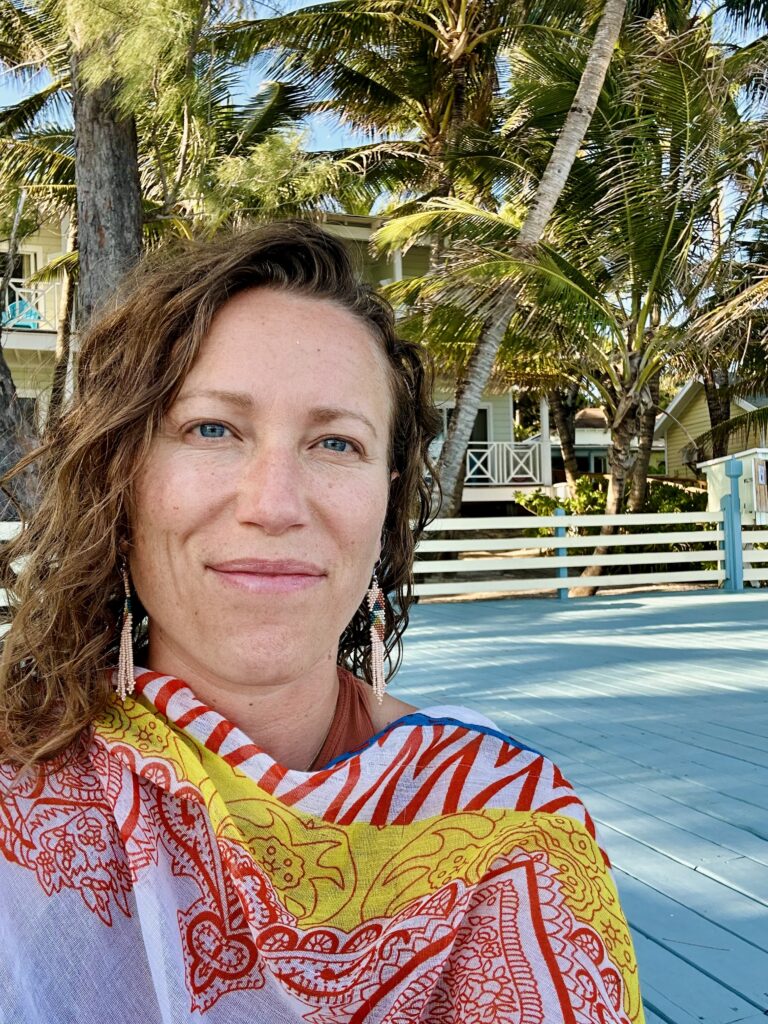By Mariah Frye — April, 2025
Since beginning my yoga practice in 2009, I have been the recipient of life-changing gifts to my body, mind, and spirit. The asana practice and breathwork, combined with the teachings on consciousness and spirituality, spoke to my whole system in a way that was liberating and deeply nourishing, and which eventually inspired me to start Stone Turtle Yoga in 2012. Thus began my journey as both a practitioner and a teacher, a two fold path which opened up even more beauty by way of a yoga community, plus a team of truly outstanding and dedicated yoga teachers.
Fast forward to Summer 2024, last summer. I had some of the most fun, enjoyment and connection teaching yoga than ever before in my yoga teaching tenure. However, my personal practice was almost non-existent, and by the end of the summer I noticed that I was hardly practicing at all. “It will come back,” I assured myself. Peaks and lulls are common in any kind of practice, so I did not fear when I noticed my inner resistance towards practicing, for the desire to practice had always returned.
This time, however, the desire to practice was not coming back. Over time, as I really sat with why I couldn’t bring myself to the mat, I realized a simple and heart-breaking truth: yoga was hurting my body. My Sacral Illiac (S.I.) joint in the lower spine/tailbone region had been chronically out of whack and in a state of low-grade pain for years, and yoga seemed to exacerbate it. A knee injury I sustained from over stretching in 2011 had progressed to the point where I gave up running in 2017. While I wasn’t sure if yoga had caused any of this, what was clear is that the yoga I was doing in my home, while providing delicious movement and alignment for most of my system, was aggravating these troubled areas to the point where my body was saying “No. Not like that.”
I decided to meet my resistance with curiosity, and endeavored to find a solution. If there was a way I could practice that felt healing and harm-free, I was determined to discover it. With great fortune, I was connected with a woman named Adelaide Meadow, a traditional midwife and expert on the female pelvis. She also happens to be an advanced yoga teacher, instructing other teachers on how to teach yoga in a way that supports female anatomy.
Why does this matter? Yoga was created by men, for men. Which is great, except that men have entirely different pelvises than women: the female pelvis is a different shape, functions optimally with different postural positioning, and contains different organs and thus performs different functions. The pelvis is the epicenter of the body, with significant connections to the legs, knees, back, hips, and even shoulders and feet. How we align (or misalign) the pelvis, and how we stretch and engage the pelvic muscles and tissues affects the entire body.
I took Adelaide’s teacher training, called “Teaching Yoga for the Female Body.” It has completely reinvigorated me because I have learned, and am still learning, how to practice and teach yoga in a way that feels so good. My S.I. and knee pain is nearly gone. Most importantly, I am wildly excited about both practicing and teaching yoga again.
Four awesome women attended my first class teaching some of this new material last night, at Somatic Flow (which has been renamed to Embodied Flow). They graciously held the role of guinea pigs, and shared their feedback. We all marvelled at what appeared outwardly as a subtle shift could create so much more inner harmony in the matter of one class. Everyone gave a report of feeling great when the class was over.
I want to close by saying that there are many women who can practice the classical yoga postures without any pain or discomfort, and with great enjoyment. Yay! My intention is not to minimize the 5,000 year lineage that these practices come from, nor the ways in which it is taught. There is no objectively “right or wrong” way to teach or do yoga, because each person’s experience is subjective to her/him. As teachers, we all cater our teaching style to what we find to be most beneficial for our students, and for ourselves via our own practice. Every yoga teacher I know encourages her/his students to listen to their bodies and practice in ways that are not hurtful. I am writing about my own personal journey, and what I have had to learn to practice Ahisma (the yogic ethical principle meaning “do no harm”) so that I could continue to feel good while practicing and teaching yoga.
Join me for Embodied Flow on Tuesdays at 5:30pm, and stay tuned for my workshop, “Yoga for the Female Body,” coming soon! Click here to register.


1 comments
Thanks for sharing & yes can relate to so much.
Also, finding that a curious open mind can reveal so much!
We are fortunate to have a teacher like you among us.
See you Tuesday 💓